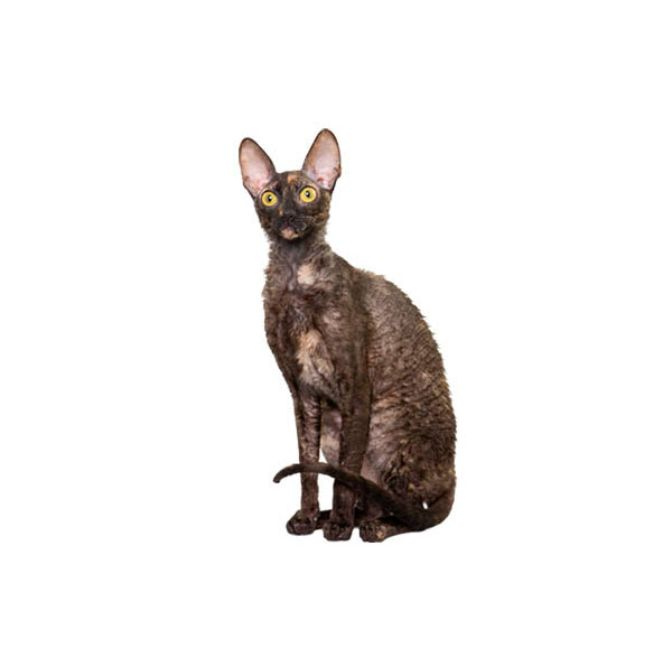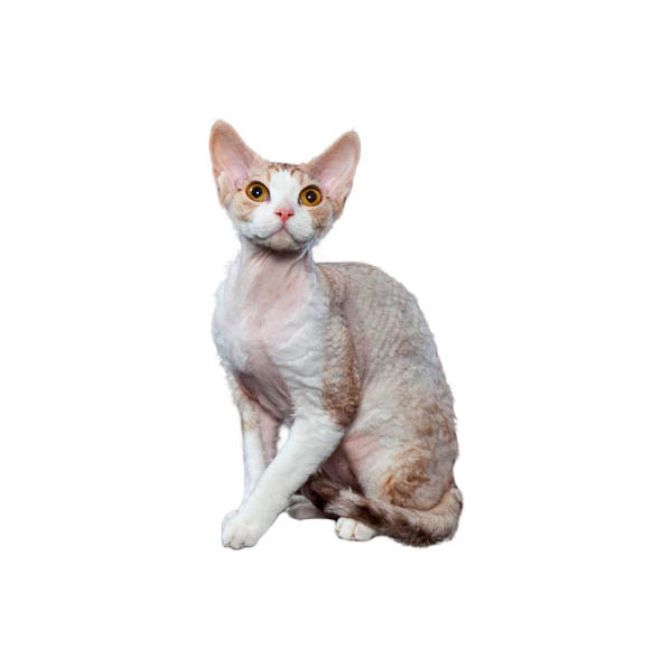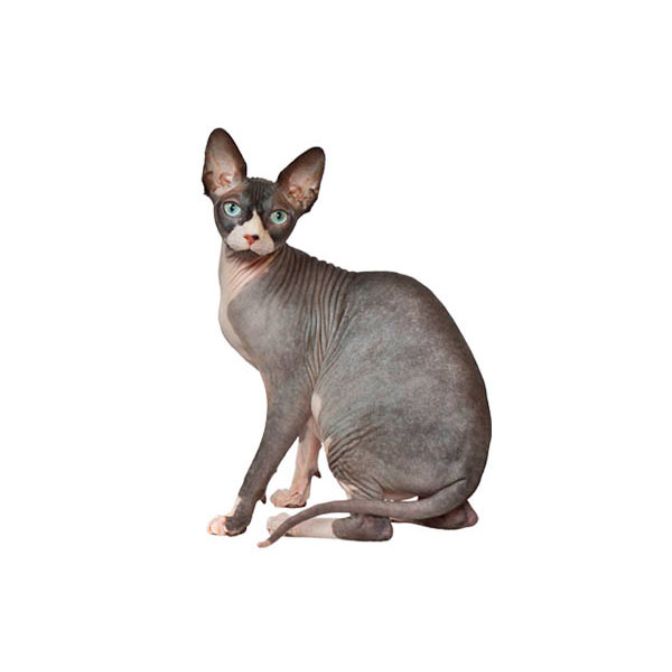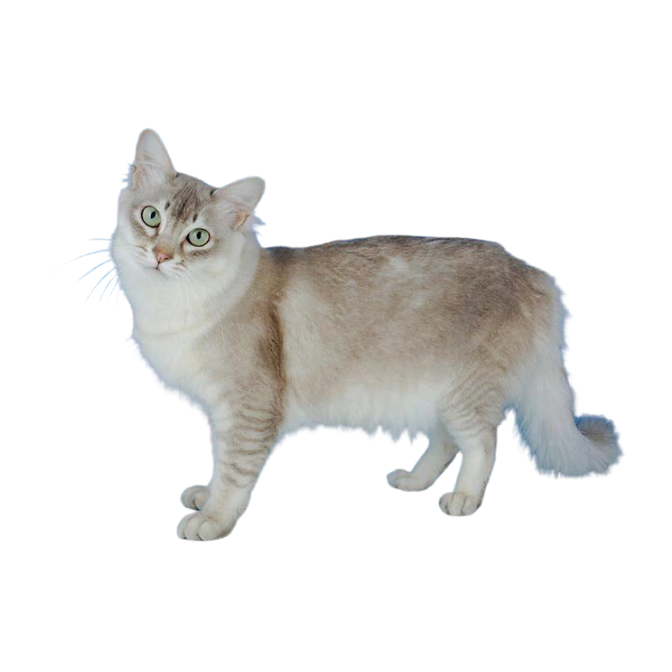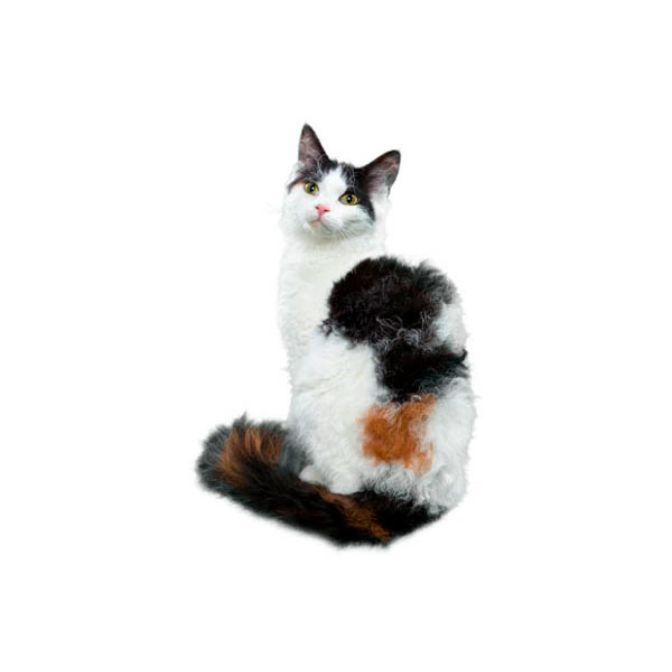Cornish Rex
Bat-eared, big-eyed and wavy-coated, the Cornish Rex has a distinctive look and exceptionally silky coat due to not having guard hairs like other breeds. This active cat has a small, whippetlike body and loves to climb, leap and sprint. With kittenlike antics that last a lifetime, this feline likes to be where the action is. The Cornish Rex is perfect for those who want a cat to participate in their family life.
Small To Medium
Short
High
3 to 6 kg
White, black, blue, red, cream, chocolate, lavender, silver, smoke and tabby, plus various patterns and shadings
The Cornish Rex cat is delightful, distinctively different, constantly charming and captivating. Rexes need people, and given a choice will spend most of their time with humans. When they are free to choose their own sleeping quarters, their first choice is the owners bed.
This is partly due to their desire for warmth. Even tempered and very affectionate, they also appeal because of their extremely quiet voices. The Cornish Rex is one of the few breeds which enjoy the crowds and excitement found at a cat show. Where other cats are frightened or annoyed by the many onlookers and the noise, the Cornish Rex watches with interest. They like people and they also like to participate in their activities.
Using its paws like hands, a Cornish Rex can pick up small objects, and some have even learned to turn door knobs and open doors. Give a Cornish Rex a piece of string and watch it go into action. Its movements are, like its very body, a study in curves as it jumps, dances and rises up on its hind legs. Its keen intelligence is observable through the alert interest with which it regards people and their antics.
The Cornish Rex have soft, wavy, rippled coats which lack guard hairs, and therefore they don't shed like other cats. This means that the Cornish Rex require very little grooming, and they don't deposit hair all over the house. This also means that this breed of cat is one to consider if you are a allergy sufferer.
The Cornish Rex has been compared to the Whippet dog because of its slender athletic build, curved contours, arched back, and willowy body. From torso to tail the Cornish Rex is long and lean. However, do not let the willowy form fool you-the Cornish Rex is no weakling. Under that ultra short fur are strong bones and muscles.
The defining characteristic of the breed, however, is its very short, close lying, very soft wavy fur. The entire coat is curly or wavy, sometimes compared to the design of a washboard. They have a marcel wave. Although completely lacking guard hairs-the long, stiff, outer hairs that act as a barrier against the elements-the Cornish Rex's coat is made up of the soft inner down and awn hairs, with down hair predominating.
The lack of guard hairs make the Cornish Rex's coat very soft touch. The soft, warm feel is luxurious. The coat requires very little grooming. They do not shed like other breeds, but the short, fine hair is hard to see, and they don't deposit their hair over the furniture like other animals. Fanciers often compare the feel of the Cornish with warm suede or crushed velvet.
Cornish Rexes can usually expect to live into their mid-teens, and many live even longer.
Cornish Rex cats are bred in diverse Colours and Patterns: Solids: Black, blue, lilac, brown, chocolate, red, & cream. There are several rare colours that are thought to be controlled by special genetic modifiers that little is known about that include, blue/lilac (blue with a pink overtone), mink (warmish brown).
Smoke: All the above colours but most visible in the darker shade and quite spectacular visually in black coated cats. The smoke hairs as the diagram shows (above), are shaded from the tip, covering nearly 2/3 of the shaft.
The smoke coat looks solid in colour, but when parted, the pale roots are clearly visible. Patterns: Tabby, spotted. These patterns are rare and not as popular as the ripples in the coat and the light they reflect do not do justice to the pattern, tending to break it up, causing the pattern to lose definition.
Bi-colour: Any of the solid colours mentioned above with white markings in large or small blotches, spots or drizzles (similar to a runny paint mark). Colourpoint: Points bred in all the genetically possible colours, including all known solid and standard patterns mentioned above.
Like the Cornish Rex, although these cats shed much less than other breeds, it is not true to say that they do not shed at all, or are hypoallergenic. However, they are less likely to cause allergies than other cats.
The Cornish Rex is an active cat - and usually very hungry - cat, and requires around 80kcal of good quality food per kg of bodyweight, per day. Care must be taken not to let this breed become obese, due to its fondness for food!
The discovery of the Rex mutant gene in farm cats from Cornwell, England in the early 1950's was undoubtedly the most exciting event in the cat world this century. In a relatively short span of time, the breed has gone from strength to strength with the Cornish Rex cats making their presence felt on the show bench. The Cornish are taking their fair share of Best in Show awards, and are literally forcing the Cat Fancy to 'sit up and take notice'.
On July 21, 1950, in Cornwall, England, Nina Ennismore discovered that her domestic British Shorthair, a tortoiseshell-and-white cat named “Serena,” had given birth to a cream-colored male with tight rows of tiny curls that looked like a miniature lamb. Ennismore named the kitten “Kallibunker” and the breed Rex as it resembled the wavy fur of the Astrex rabbits she raised and exhibited.
